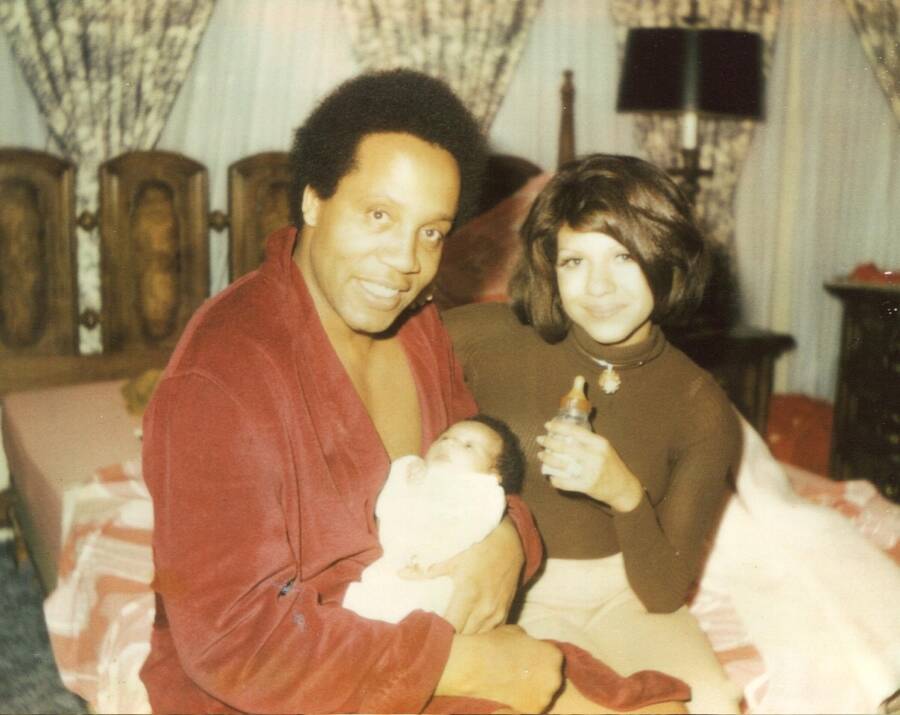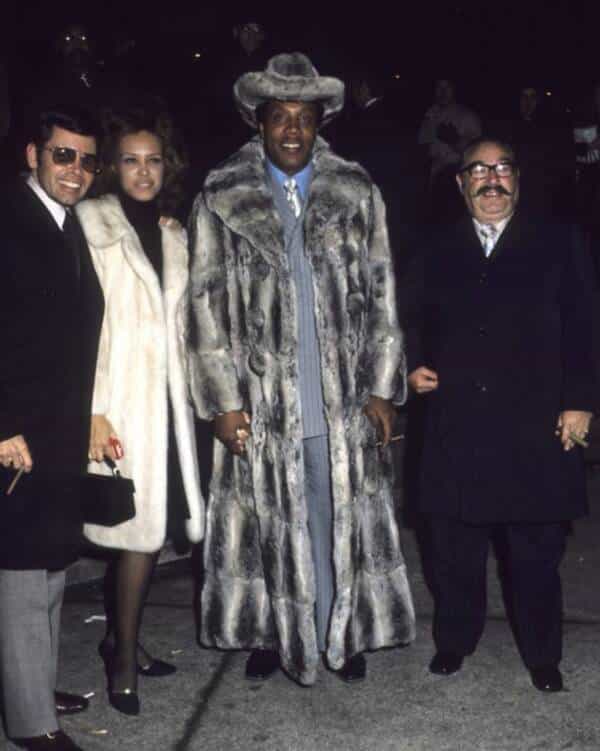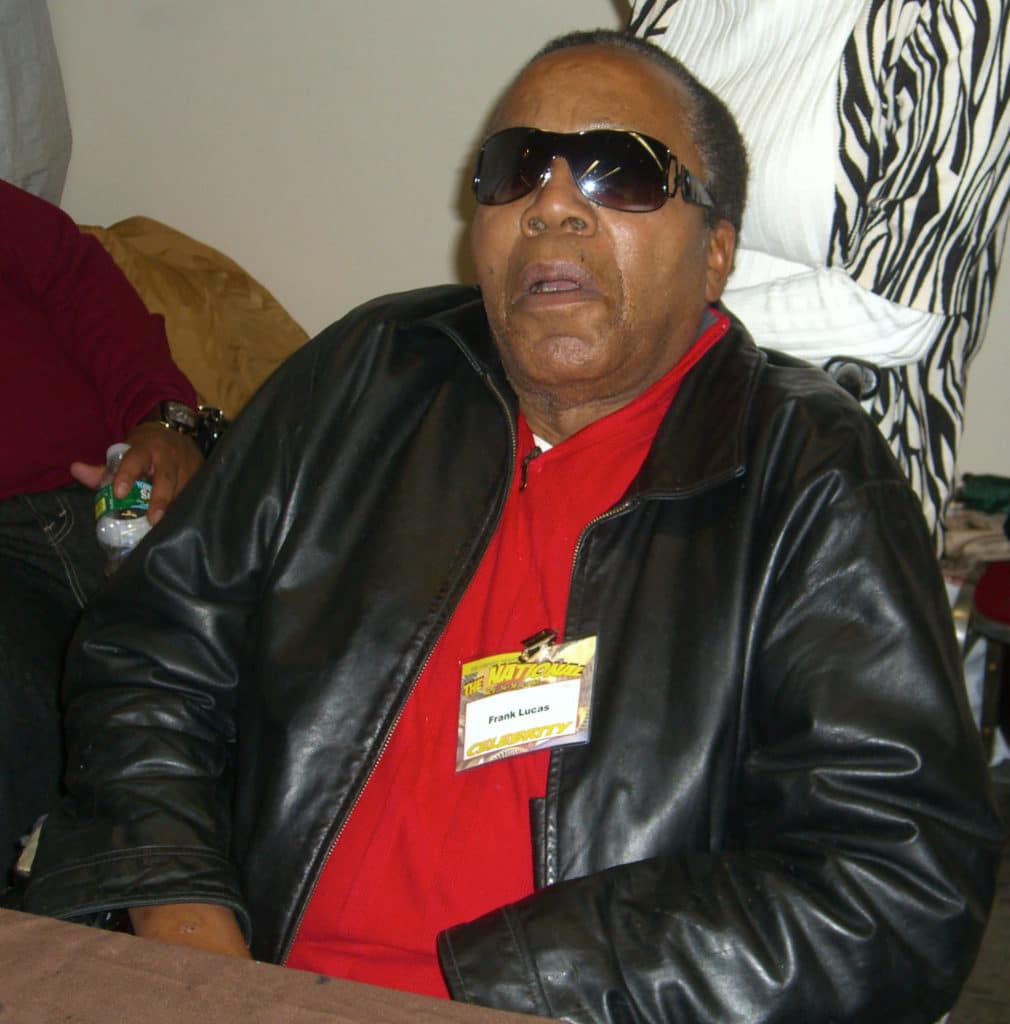Last updated on October 20th, 2023 at 07:58 pm
Frank Lucas was a prolific heroin dealer in New York in the 1970s, going toe-to-toe with the mafia and rumored to be making up to $1 million a day at some points. But how did the man with humble beginnings become such a gangster boss?
It is often difficult to nail down facts about Lucas’s life since he was known as a notorious fibber and liked to exaggerate.
For example, the 2007 movie American Gangster starring Denzel Washington, is based on Frank Lucas, but many who knew him in real life have argued that the film takes plenty of liberties and is mostly made up.
It was based on Mark Jacobson’s profile on Frank Lucas, The Return of the Superfly, which had Lucas’s firsthand accounts of his life but is full of boasts and brags that didn’t happen.
We know he became the heroin kingpin of Harlem, but his life is shrouded in mystery and folklore around how he did it, what methods he used, and so on.
Here, we’ve laid out how Frank Lucas built his drug empire and what he did after he was caught and arrested.

Entry into Crime
Frank Lucas was born on September 9th, 1930, in rural North Carolina. He grew up as part of a poor household and spent a lot of time looking after his siblings and suffering under strict Jim Crow laws in the American South.
His childhood was also spent in the Great Depression, meaning he likely struggled for money and may have committed early crimes like shoplifting to stay afloat.
Lucas always said that the instance that changed his life and turned him in the direction of crime was witnessing his cousin’s murder.
Lucas lived in Greensboro at the time and claimed that five members of the Ky Klux Klan came to his house covered in sheets and hoods one night when he was six years old. Then, they killed his 13-year-old cousin right there because they said he’d looked at a white woman flirtatiously.
There’s no evidence to state that this is true. However, these types of killings happened a lot back then and often went unreported since African Americans avoided the police, who were all white men and would have been on the side of the Ku Klux Klan.
After this, Lucas was the oldest boy in his family and had to provide. He stole food and, as he got older, would also mug drunk people outside a local tavern.
Moving to New York
During his teenage years, Lucas found a job as a truck driver. He made an honest living for a short time working for a pipe company but was soon found sleeping with his boss’s daughter.
After being caught in the act, Lucas fought with his boss and hit him over the head with a heavy pipe before setting the place on fire and stealing $400 from the till.
After this event, his mother was worried he would be caught and jailed for it, so she begged him to run away to New York.
Lucas headed to Harlem when he was just 16 years old, in the summer of 1946. Quickly, he saw people making lots of money in the illegal drug and gambling trade and decided that was how he would make his fortune.
He started by robbing a bar at gunpoint, then stealing diamonds from a jewelry store. In one particular instance, Lucas supposedly robbed all the players at a high-stakes crap game and started dealing drugs in the lower levels of a gang.
After shooting a local who backed out of a dope deal in the summer of 1966, Lucas drew the attention of a big Harlem gangster, Ellsworth’ Bumpy’ Johnson. He was the head of an illegal gambling and extortion ring in the city and took his time teaching Lucas the tricks of the trade.
Johnson died in 1968, and there was a power vacuum in Harlem that Lucas was eager to snatch. So he seized territory and started his own organization.
International Drug Trafficking
Once he was set up as a ganglord, Lucas started planning. He said he would reportedly take regular trips to himself in hotel rooms, reviewing his gang and learning from any of his mistakes. He’d mentally run through every single step, every detail of his plans to ensure there were no loopholes.
Frank Lucas wasn’t alone in his drug smuggling crimes. The mafia was rife in New York, and he had to bypass them.
In the late 1960s, the Vietnam War was ongoing, and it was whispered that U. S soldiers based in foreign countries tried plenty of illegal drugs–including heroin.
They returned to their home country with PTSD and a brand new addiction, and heroin (dope) ran rampant all over the United States. There were brand names like ‘Harlem Hijack,’ ‘Mean Machine,’ and more.
Lucas wanted to cut out the mafia and go straight to the heroin source, so he went to Southeast Asia to find it himself.
He headed to Thailand and made the acquaintance of Leslie ‘Ike’ Atkinson, who ran Jack’s American Bar–a place for African American soldiers to hang out. Atkinson was also married to Lucas’s cousin, so he felt he could trust him, and he came from Greensboro, North Carolina.
Together, the duo traveled through Thai jungles to find Atkinson’s source–a Chinese-Thai man called Luetchi Rubiwat.
He owned hundreds of acres of poppy fields in some dense jungle near Burma and Laos, and they processed the poppies into heroin inside some nearby mountain caves. Lucas bought over a hundred kilos for just $4,200 per kilo (rather than the $50,000 he would have paid in the US from the mafia).
The distribution system he used was made up of soldiers and enlisted men. They included foot soldiers, right up to high-ranking officers. In later years, there were rumors that Lucas used coffins to ship drugs into America as they expected nobody was going to check US Army coffins for drugs–but this has been confirmed to be a lie.
They may have done it once or twice, but it wasn’t nearly as prolific a venture as Lucas made out. Instead, it’s more likely they smuggled the heroin in furniture.
Instead, they used military planes to bring the drugs into the country, where packages arrived at army bases and were then shipped to accomplices who unpacked them and got them ready to be sold.
Most street heroin in New York City was between five and six percent, but because Lucas was getting it for such a cheap rate in Thailand, he could create a product that was 10-12% purity.
His brand name was ‘Blue Magic, and he had a high customer base. He hired his younger brothers to act as enforcers, asnd they controlled some of the major thoroughfares in Harlem.
Lucas also had women working for him to act as drug packers. They mixed the heroin with mannite and quinine. He didn’t want them stealing any of it, so he made them do it naked with only plastic gloves on.
In the high days, he boasted about making millions every day. He laundered money to hide it, using a bank in the Bronx to exchange the dirty money for more legitimate funds. He hid some in the Cayman Islands; he bought businesses like dry cleaners and gas stations and owned commercial and residential properties all over the country.
Catching The Attention of The Law
Lucas liked to dress casually so as not to attract attention. But he recognizes one mistake he made. He bought a $100,000 full-length chinchilla fur coat and, in 1971, attended a Muhammad Ali boxing match, which he later called a ‘massive mistake’ as this was the event where he first drew the eye of law enforcement.

He later said the police were surprised that his seats were so good. Better than Frank Sinatra and Diana Ross. So naturally, this unknown person who has amassed lots of wealth is going to raise questions, and he advised he left that fight ‘a marked man.’
He did like the celebrity circuit, getting spotted at some of the best nightclubs in Manhattan and schmoozing with people like James Brown, Diana Ross, Joe Louis, and Muhammad Ali. He also contributed $100,000 to make a 1970s movie The Rip Off, a gangster movie set in NYC. But the movie was never finished.
Arrest
On 28th January 1975, Frank Lucas’s property in Teaneck, New Jersey, was raided by the Drug Enforcement Agency (DEA). Apparently, his wife Julie threw suitcases stuffed with dollar bills out the window in a blind panic, but they still recovered $584,000 in cash from the property and keys to some of his Cayman Islands safety deposit boxes.
However, after the raid, there was still nothing tying him to the drug operation, so even though ten people were arrested, Lucas was still free.
During the interrogations, though, Lucas’ nephew crumbled. He named people, showed investigators where deals were made, and identified all the sites where payphones were used for their drug dealing. This information was used to charge a further 43 people and bring Lucas to trial.
At his trial, the reality of his heroin dealings was uncovered. People testified about the high purity of his dope and stated that it had catastrophic effects on the population, leading to lots of drug overdoses in the African American community.
Prosecutor Richard Roberts declared Lucas responsible for more African American deaths than the KKK, thanks to Blue Magic. He was found guilty and sentenced to 70 years imprisonment.
Years as a Government Informant
After being arrested, Lucas seized his assets–including his supposed millions in cash. Although the FBI has never confirmed he had millions in cash. However, it wasn’t long before he started cooperating with the government and giving them the names of his accomplices and corrupt NYPD members working with him. He even named Atkinson, his long-time contact in Thailand.
Lucas’s information led to 150 cases, which included 30 members of his own family and a high number of New York’s Drug Enforcement Agency officers. His information was valuable, and he was rewarded for it. His sentence got reduced to 15 years, and he was released in 1981.
Although he was arrested again in 1984 for further drug exchanges, he was released in 1991 and stayed in contact with Roberts–his prosecutor–to help him get his life back on track. Later, Roberts was even the godfather of Lucas’s son.
Later Life and Death
In his later years, Lucas was quoted to regret his many years as a heroin kingpin, stating that he had ‘done more damage than good. He said that all he cared about was the money at the time but called the heroin business ‘the worst business. After returning to Harlem once he was out of jail, he saw the high social deprivation and devastation there, realizing he was partially responsible for it.

He was involved in the movie American Gangster as the film was a dramatized version of his life, where Denzel Washington played him. Lucas regularly appeared on the film set to advise and provide guidance on his quirks. However, even Lucas admitted that the film was only partially true, and a lot had been made up to add drama.
Lucas spent his elderly years in Newark and was bound to a wheelchair. He helped his daughter with an organization supporting children who have imprisoned parents (Yellow Brick Road) and wrote a memoir about his time as a Harlem drug kingpin–promising all the profits to the promotion of education. He thought it was important children were educated and asked that they learn from his mistakes.
Frank Lucas passed away from natural causes on 30th May 2019, aged 88 years old, in a care facility in Cedar Grove, New Jersey.

